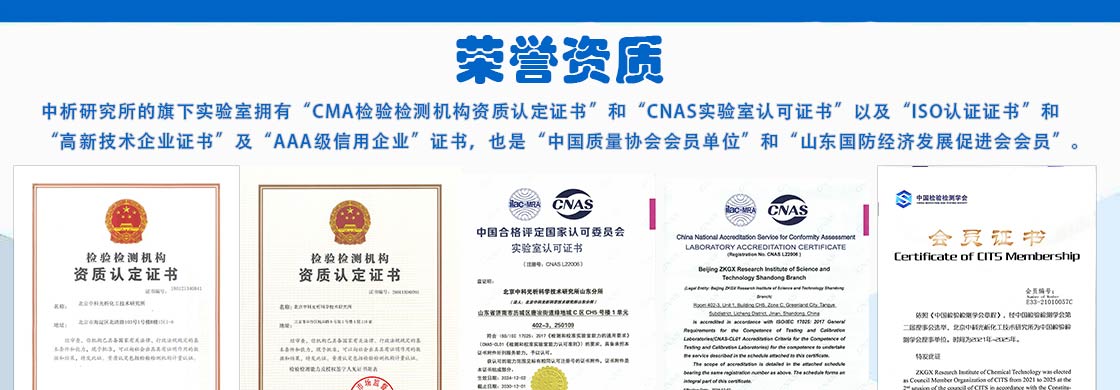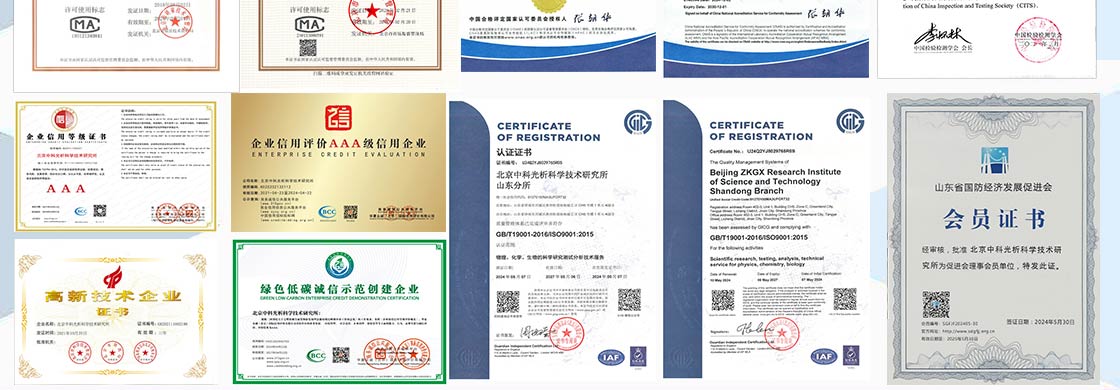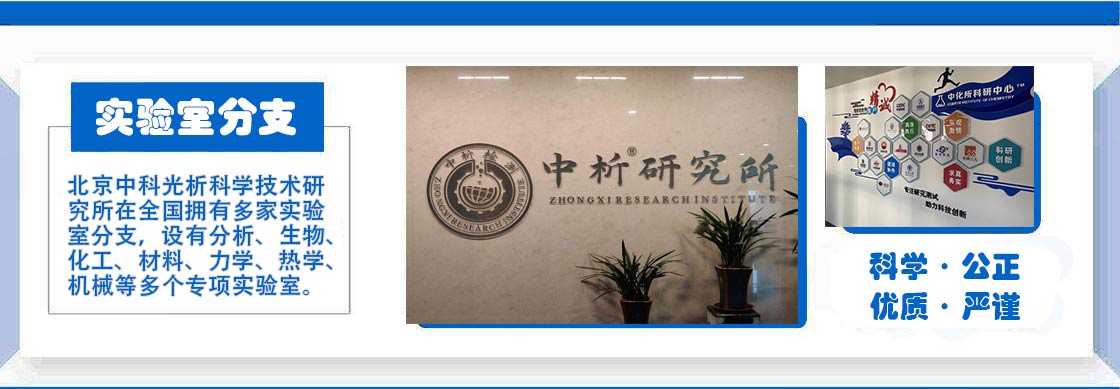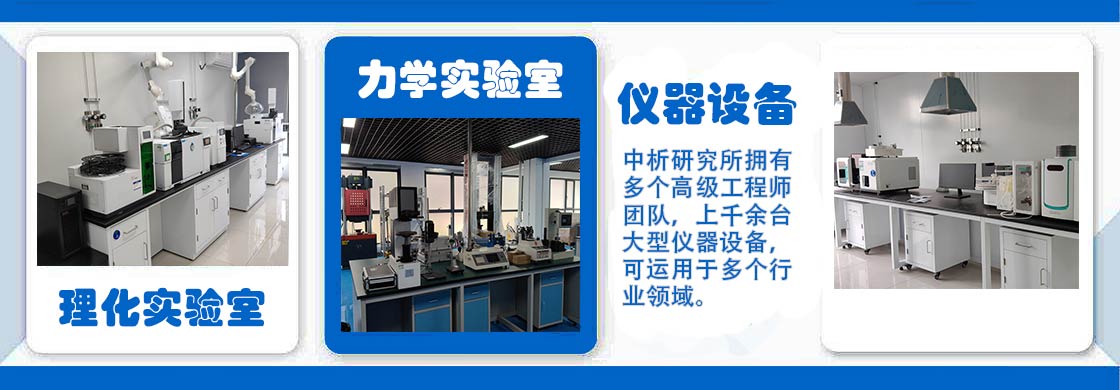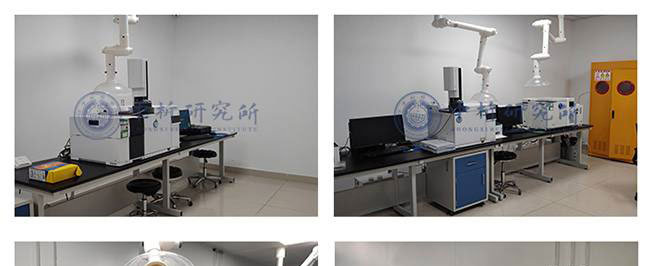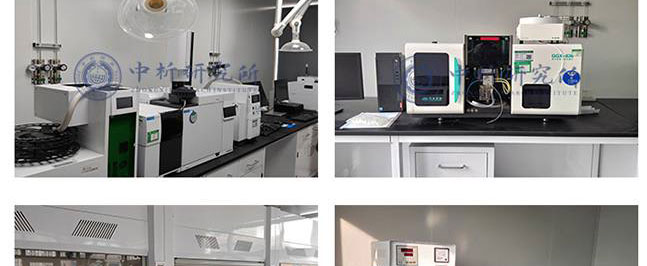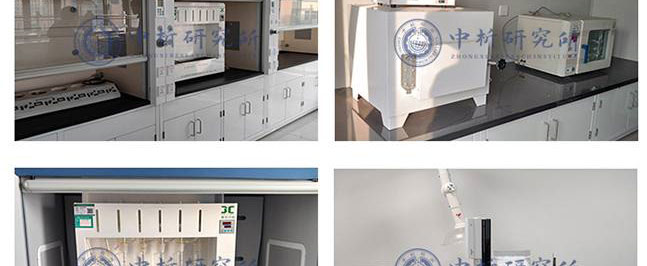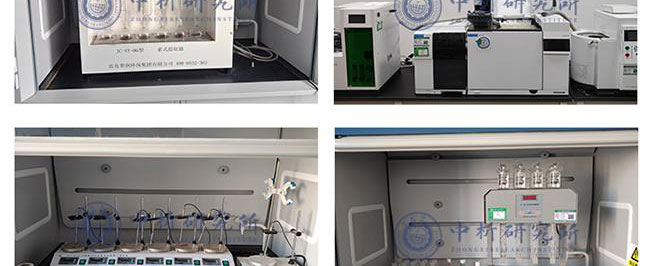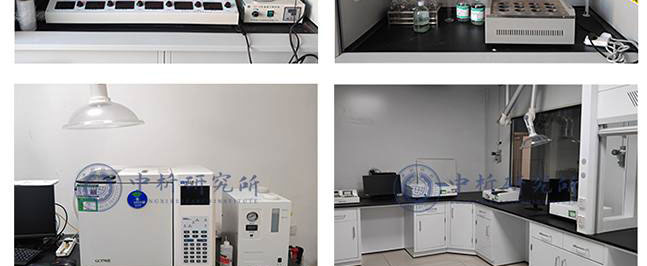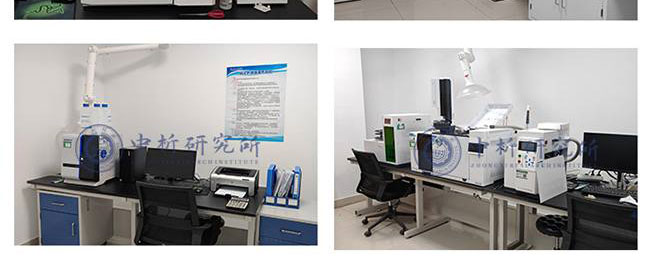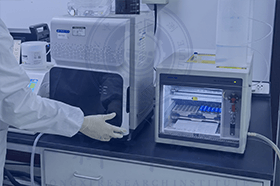国家标准 GB/T 6594.1-1998 聚苯乙烯(PS)模塑和挤出材料 第1部分:命名系统和分类基础
【适用范围】 本标准规定了聚苯乙烯(PS)模塑和挤出材料的命名系统。本标准也可作为分类的基础。 不同型号的聚苯乙烯树脂用指定的特征性能值以及推荐用途和(或)加工方法、重要性能、添加剂、着色剂为基础的分类系统加以区分。聚苯乙烯树脂的特征性能为维卡软化温度和熔体质量流动速率。 本标准适用于无定形聚苯乙烯均聚物。 本标准适用于常规使用的,经着色剂、添加剂、填料等改性的和未改性的材料。 本标准不适用于可发性聚苯乙烯、苯乙烯共聚物、苯乙烯衍生物的均聚物和那些用其他聚合物,如弹性体改性的品种。 本标准中命名相同的材料不意味着必定具有相同的性能。本标准不提供用于说明材料特殊用途和(或)加工方法所需的工程数据、性能数据和加工条件的数据。如果需要,参看有关标准。 为了说明某种聚苯乙烯材料的特殊用途或为了保证加工的重现性,可以在字符组5中给出附加要求。
【中国标准分类】 G31 合成材料 【国际标准分类】 83.080.20-热塑性塑料
国家标准 GB/T 6594.2-2003 塑料 聚苯乙烯(PS)模塑和挤出材料 第2部分:试样制备和性能测定
【适用范围】 GB/T 6594的本部分规定了聚苯乙烯(PS)模塑和挤出材料试样制备和性能测定的方法。本部分还规定了对试验材料的预处理及试样在试验前的状态调节的要求。rn 本部分规定了试样制备和性能测定的方法和条件。本部分列出了表征PS模塑和挤出材料合适和必要的性能和测试方法。rn 这些性能是从ISO 10350-1通用测试方法中选择的。本部分还规定了模塑和挤出材料广泛应用的或有特殊意义的其他试验方法,以及第1部分中的命名性能的测定方法。rn 为了获得具有重现性和可比性的试验结果,应使用本部分规定的试样制备和状态调节的方法、试样尺寸和试验方法。使用不同条件制备的试样或不同尺寸的试样所获得的测试数据可能不一致。
【中国标准分类】 G31 合成材料 【国际标准分类】 83.080.20-热塑性塑料
国家标准 GB/T 12671-2008 聚苯乙烯(PS)树脂
【适用范围】本标准规定了聚苯乙烯树脂的分类命名、要求、试验方法、检验规则、标志、包装、运输和贮存等。n本标准适用于无定形聚苯乙烯均聚物。n本标准不适用于可发性聚苯乙烯、苯乙烯共聚物、苯乙烯衍生物的均聚物和那些用其他聚合物,如弹性体改性的品种。
【中国标准分类】 G32 合成材料 【国际标准分类】 83.080.20-热塑性塑料
国家标准 GB/T 18964.1-2008 塑料 抗冲击聚苯乙烯(PS-I)模塑和挤出材料 第1部分:命名系统和分类基础
【适用范围】GB/T 18964的本部分规定了抗冲击聚苯乙烯(PS-I)热塑性塑料材料的命名系统。该系统可作为分类基础。rn不同类型的PS-I热塑性材料用下列指定的特征性能的值以及推荐用途和(或)加工方法、重要性能、添加剂、着色剂、填料和增强材料等为基础的一种分类系统加以区分:na) 维卡软化温度;rnb) 熔体质量流动速率;rnc) 简支梁缺口冲击强度;rnd) 弯曲模量。rn本部分适用于所有以聚苯乙烯和(或)烷基取代苯乙烯与苯乙烯的共聚物为连续相,以丁二烯的橡胶相为分散相的两相聚合物体系组成的抗冲击聚苯乙烯塑料
【中国标准分类】 G31 合成材料 【国际标准分类】 83.080.20-热塑性塑料
国家标准 GB/T 18964.2-2003 塑料 抗冲击聚苯乙烯(PS-I)模塑和挤出材料 第2部分:试样制备和性能测定
【适用范围】 GB/T 18964的本部分规定了抗冲击聚苯乙烯(PS-I)模塑和挤出材料试样制备和性能测定的方法。本部分还规定了对试验材料的预处理及试样在试验前的状态调节的要求。rn 本部分规定了试样制备和性能测定的方法和条件。本部分列出了表征PS-I模塑和挤出材料合适和必要的性能和测试方法。rn 这些性能是从ISO 10350-1通过测试方法中选择的。本部分还规定了模塑和挤出材料广泛应用的或有特殊意义的其他试验方法,以及第1部分中的命名性能的测定方法。rn 为了获得具有重现性和可比性的试验结果,应使用本部分规定的试样制备和状态调节的方法、试样尺寸和试验方法。使用不同条件制备的试样或使用不同尺寸的试样所获得的测试数据可能不一致。
【中国标准分类】 G32 合成材料 【国际标准分类】 83.080.20-热塑性塑料
国家标准 GB/T 37198-2018 抗冲击聚苯乙烯(PS-I)树脂
【适用范围】本标准规定了抗冲击聚苯乙烯(PS-1)树脂的分类命名、要求、试验方法、检验规则、标志和随行文件、包装、运输和贮存。
本标准适用于以聚苯乙烯和(或)烷基取代苯乙烯与苯乙烯的共聚物为连续相、以丁二烯橡胶相为分散相的两相聚合物体系组成的抗冲击聚苯乙烯树脂。
本标准不适用于可发性聚苯乙烯树脂。
【中国标准分类】 G32 合成材料 【国际标准分类】 83.080.20-热塑性塑料
国家标准 GB/T 38271-2019 塑料 聚苯乙烯(PS)和抗冲击聚苯乙烯(PS-I)中残留苯乙烯单体含量的测定 气相色谱法
【适用范围】本标准规定了用气相色谱法测定聚苯乙烯(PS)和抗冲击聚苯乙烯(PS-I)中残留苯乙烯单体含量的三种方法:
A法--溶解法;
B法--溶解-沉淀法;
C法--顶空法。
本标准适用于测定PS及PS-I中的苯乙烯单体含量,也适用于同时测定PS及PS-I中其他挥发性芳香烃的含量。
【中国标准分类】 G31 合成材料 【国际标准分类】 83.080.20-热塑性塑料
国家标准 GB/T 40006.6-2021 塑料 再生塑料 第6部分:聚苯乙烯(PS)和抗冲击聚苯乙烯(PS-I)材料
【适用范围】本文件规定了聚苯乙烯(PS)和抗冲击聚苯乙烯(PS-I)再生塑料的分类与命名、要求、试验方法、检验规则、标志、包装、运输和贮存等。
本文件适用于以废弃的聚苯乙烯为原料,经筛选、分类、清洗、熔融挤出造粒等工艺(包含拉条、热切和/或水切等造粒工艺)制成的聚苯乙烯再生塑料颗粒。
本文件适用于以废弃的抗冲击聚苯乙烯为原料,经筛选、分类、清洗、熔融挤出造粒等工艺〔包含拉条、热切和/或水切等造粒工艺)制成的抗冲击聚苯乙烯再生塑料颗粒。
本文件不适用于来自医疗废物、农药包装等危险废物和放射性废物的再生塑料。
本文件不适用于聚苯乙烯和其他树脂材料混合后加工制备的塑料。
本文件不适用于抗冲击聚苯乙烯和其他树脂材料混合后加工制备的塑料。
【中国标准分类】 G32 合成材料 【国际标准分类】 83.080.20-热塑性塑料
行业标准 HG/T 2171-2007 阴图型PS版
【适用范围】本标准规定了阴图型PS版的技术要求、测试方法、检验规则、包装及标志、贮存和运输。n本 标准适用于经粗化和阳极氧化处理过的、以铝版基为支持体的阴图型PS版。适应于接触暴光的真空晒版机、连晒机和自动显影机加工工艺。
【中国标准分类】 G84 信息用化学品 【国际标准分类】 37.040.30-摄影用药品
行业标准 HG/T 2171-1991 阴图型PS版
【适用范围】
【中国标准分类】 A17 经济、文化 【国际标准分类】 37.100.99-有关印刷技术的其他标准
行业标准 HG/T 2619-1994 PS版铝版基
【适用范围】
【中国标准分类】 G81 有色金属及其合金产品 【国际标准分类】 37.040.20-相纸、胶卷和暗盒
行业标准 HG/T 2694-2003 阳图型PS版
【适用范围】本标准规定了阳图型PS版的技术要求、测试方法、检验规则、包装及标志、贮存和运输条件。rn 本标准适用于经粗化和阳极氧化处理过的、以铝板基为支持体的阳图型PS版,适用于接触曝光的真空晒版机、连晒机和自动显影机加工工艺。rn 本标准不适用于光学投影和直接书写制版。
【中国标准分类】 G81 信息用化学品 【国际标准分类】 37.100.99-有关印刷技术的其他标准
行业标准 HG/T 2694-1995 阳图型PS版
【适用范围】
【中国标准分类】 G32 信息用化学品 【国际标准分类】 83.080.20-热塑性塑料
行业标准 QB/T 4885-2015 聚苯乙烯(PS)片材混配料用母粒
【适用范围】本标准规定了聚苯乙烯(PS)片材混配料用母粒(以下简称“母粒”)的颜色类别代号和产品代号、要求、试样的制备、试验方法、检验规则和标志、包装、运输、贮存。本标准适用于以PS树脂、颜料、染料为主要原料生产的PS片材混配料用母粒。本标准不适用于生产与食品直接接触的制品所用聚苯乙烯片材混配料用母粒。
【中国标准分类】 G32 合成材料 【国际标准分类】 83.080.20-热塑性塑料
行业标准 CY/T 25-1995 阳图型PS版感光液
【适用范围】本标准规定了阳图PS版感光液的技术要求、试验方法、检验规则、包装标志和运输贮存条件。rnt本标准适用于以重氮蔡醒磺酞氯为主要原料的阳图PS版感光液。
【中国标准分类】 G81 信息用化学品 【国际标准分类】 37.100.99-有关印刷技术的其他标准
行业标准 CY/T 32-1999 再生阳图型PS版
【适用范围】本标准规定了再生阳图型PS版的技术要求、试验方法、检验规则以及包装、贮存和运输的要求。rnt本标准适用于以铝板基为支持体的再生阳图型PS版。
【中国标准分类】 A17 经济、文化 【国际标准分类】 37.100.01-印制技术综合
行业标准 SJ/T 9550.20-1993 PS型锌空气电池
【适用范围】本标准规定了PS型锌空气电池的技术要求、试验方法、检验规则等。rn 本标准适用于江、河、湖、海航标灯、微波定位仪、通讯机、铁路讯号、地震测量仪照明等较大电流用电器具配套使用的PS型锌空气电池。
【中国标准分类】 K82 电源 【国际标准分类】 29.220-电池和蓄电池
行业标准 YD/T 1424.2-2005 900/18OOMHz TDMA数字蜂窝移动通信网业务交换点(SSP)设备技术要求(CAMEL3)第2部分:分组域(PS)
【适用范围】本部分规定了在CAMEL3阶段对900/1800MHz TDMA数字蜂窝移动通信系统在分组交换域(以下简称PS域)业务交换点(SSP)设备的技术要求,包括SSP的功能、接口规程、信令配合、计费、维护、测量等。其技术要求是指N设备直接升级支持SSP功能时,对SSP设备的技术要求。n本部分适用于900/1800MHZ TDMA数字蜂窝移动通信网CAMLE3阶段PS域的业务交换点(SSP)设备。
【中国标准分类】 H61 通信设备 【国际标准分类】 77.150.10-铝产品
国际标准 ISO 1622-1-2012 塑料--聚苯乙烯(PS)模塑和挤塑材料--第1部分:命名体系和基本规范
【适用范围】1.1 This part of ISO 1622 establishes a system of designation for polystyrene thermoplastic material which may be used as the basis for specifications.n1.2 The types of polystyrene plastics are differentiated from each other by a classification system based on appropriate levels of the designatory propertiesna) Vicat softening temperature andnb) melt volume-flow ratenand on information about the intended application and/or method of processing important properties additives and colorants.n1.3 This part of ISO 1622 is applicable to all amorphous polystyrene homopolymers.nIt applies to materials ready for normal use unmodified or modified by colorants additives fillers etc.nThis part of ISO 1622 does not apply to expanded polystyrene styrene copolymers homopolymers of substituted styrene or those modified with other polymers such as elastomers.n1.4 It is not intended to imply that materials having the same designation give necessarily the same performance. This part of ISO 1622 does not provide engineering data performance data or data on processing conditions which might be required to specify a material for a particular application and/or method of processing.nIf such additional properties are required they shall be determined in accordance with the test methods specified in Part 2 of this International Standard if suitable.n1.5 In order to specify a thermoplastic material for a particular application or to ensure reproducible processing additional requirements may be given in data block 5 (see 3.1).
【中国标准分类】 G31 合成材料 【国际标准分类】 83.080.20-热塑性塑料
国际标准 ISO 1622-1-1994 塑料.聚苯乙烯(PS)模塑和挤塑材料.第1部分:名称和牌号
【适用范围】Cancels and replaces the firs edition (1985). Establishes a system of designation for polystyrene thermoplastic material which may be used as the basis for specifications. Applicable to all amorphous polystyrene homopolymers. Applies to materials ready for normal use unmodified or modified by colorants additives fillers etc. Does not apply to expanded polystyrene styrene copolymers homopolymers of substituted styrene and those modified with other polymers such as elastomers.
【中国标准分类】 G23 化肥、农药 【国际标准分类】 83.080.20-热塑性塑料
国际标准 ISO 2561-2012 塑料--用气相色谱法测定聚苯乙烯(PS)和抗冲击聚苯乙烯(PS-I)中剩余的苯乙烯单体
【适用范围】This International Standard specifies a method for the determination of the residual styrene monomer innpolystyrene (PS) and impact-resistant polystyrene (PS-I) by gas chromatography. It may also be used for thensimultaneous determination of other volatile aromatic hydrocarbons in PS and PS-I.
【中国标准分类】 G31 合成材料 【国际标准分类】 83.080.20-热塑性塑料
国际标准 ISO 2897-2 COR.1-1995 塑料 耐冲击聚苯乙烯(PS-I)模塑和挤出材料 第2部分: 试样的制备和性能的测定 第1次技术勘误表
【适用范围】
【中国标准分类】 G32 合成材料 【国际标准分类】 83.080.20-热塑性塑料
国际标准 ISO 14631-1999 缓冲聚苯乙烯压制板(PS-I)--要求和试验方法
【适用范围】This standard specifies the requirements and test methods for solid flat extruded sheets of impact-modified polystyrene (PS-I) without fillers and reinforcing materials. This standard applies only to thickness 0 25 mm to 20 0 mm in accordance with clause 3. This standard also applies to PS-I sheet in roll form.nnote:1 Abbreviation PS-I see ISO 1043-1
【中国标准分类】 G33 合成材料 【国际标准分类】 83.140-橡胶和塑料制品
国际标准 ISO 19063-1-2015 塑料--耐冲击聚苯乙烯(PS-I)模塑和挤出材料--第1部分:命名系统和分类基础
【适用范围】 This part of ISO 19063 establishes a system of designation for impact-resistant polystyrene (PS-I)nmoulding and extrusion materials which may be used as the basis for specifications.nThe types of impact-resistant polystyrene plastic are differentiated from each other by a classificationnsystem based on appropriate levels of the designatory properties:na) Vicat softening temperature;nb) melt mass-flow rate;nc) Charpy notched impact strength;nd) flexural modulus;nand on information about composition intended application and/or method of processing importantnproperties additives colorants fillers and reinforcing materials.nThis part of ISO 19063 is applicable to all impact-resistant polystyrene plastics with a two-phasenpolymer system comprised of a continuous phase consisting of polystyrene and/or a copolymer ofnstyrene with an alkyl-substituted styrene and a dispersed elastomeric phase based on butadiene.nIt applies to materials ready for normal use unmodified or modified by colorants additives fillers etc.nThis part of ISO 19063 does not apply to expandable materials.nIt is not intended to imply that materials having the same designation give necessarily the samenperformance. This part of ISO 19063 does not provide engineering data performance data or data onnprocessing conditions which may be required to specify a material for a particular application and/ornmethod of processing.nIf such additional properties are required they will be determined in accordance with the test methodsnspecified in ISO 2897-2 if suitable.nIn order to specify a thermoplastic material for a particular application or to ensure reproduciblenprocessing additional requirements may be given in data block 5 (see 3.1).
【中国标准分类】 G31 合成材料 【国际标准分类】 83.080.20-热塑性塑料
国外标准 ASTM F789-1995a 聚苯乙烯和橡胶改良的聚苯乙烯模压和挤压材料(PS)的标准规范
【适用范围】1.1 This specification covers requirements and test methods for materials dimensions workmanship flattening resistance impact resistance pipe stiffness extrusion quality joining systems and a form of marking for Type PS-46 and Type PS-115 poly(vinyl chloride) (PVC) plastic gravity flow sewer pipe having a minimum pipe stiffness of 46 psi (320 kPa) and 115 psi (790 kPa) respectively and fittings. 1.2 Pipe and fittings produced to this specification shall be installed in accordance with Practice D2321. 1.3 The values stated in inch-pound units are to be regarded as the standard. The values given in parentheses are provided for information purposes only. 1.4 The following precautionary caveat pertains only to the test method portion Section 8 of this specification: This standard does not purport to address all of the safety concerns if any associated with its use. It is the responsibility of the user of this standard to establish appropriate safety and health practices and determine the applicability of regulatory limitations prior to use.
【中国标准分类】 G31 合成材料 【国际标准分类】 83.080.20-热塑性塑料
国外标准 BS EN ISO 1622-2-1999 塑料.聚苯乙烯(PS)模塑和挤塑材料.试样制备和性能测定
【适用范围】This part of ISO 1622 specifies the methods of prep-aration of test specimens and the test methods to be used in determining the properties of PS moulding and extrusion materials. Requirements for handling test material and for conditioning both the test ma-terial before moulding and the specimens before testing are given here.nProcedures and conditions for the preparation of test specimens and procedures for measuring properties of the materials from which these specimens are made are given. Properties and test methods which are suitable and necessary to characterize PS mould-ing and extrusion materials are listed.nThe properties have been selected from the general test methods in ISO 10350. Other test methods in wide use for or of particular significance to these moulding and extrusion materials are also included in this part of ISO 1622 as are the designatory proper-ties specified in part 1.nIn order to obtain reproducible and comparable test results it is necessary to use the methods of speci-men preparation and conditioning the specimen di-mensions and the test procedures specified herein. Values determined will not necessarily be identical to those obtained using specimens of different dimen-sions or prepared using different procedures.
【中国标准分类】 G31 合成材料 【国际标准分类】 83.080.20-热塑性塑料
国外标准 BS ISO 1622-2-1995 塑料.用气相色谱法测定聚苯乙烯(PS)和抗冲击聚苯乙烯(PS-I)中剩余的苯乙烯单体
【适用范围】This International Standard specifies a method for the determination of the residual styrene monomer in polystyrene (PS) and impact-resistant polystyrene (PS-I) by gas chromatography. It may also be used for the simultaneous determination of other volatile aromatic hydrocarbons in PS and PS-I.
【中国标准分类】 G31 合成材料 【国际标准分类】 83.080.20-热塑性塑料
国外标准 BS EN ISO 2897-1-1999 塑料.耐冲击的聚苯乙烯(PS-I)的模塑和挤塑材料.名称和符号体系和规范基础
【适用范围】1 This part of ISO 2897 establishes a system of designation for impact-resistant polystyrene (PS-I) thermoplastic materials which may be used as the basis for specifications.n2 The types of impact-resistant polystyrene plastic are differentiated from each other by a classification system based on appropriate levels of the designator/ propertiesna) Vicat softening temperaturenb) melt flow ratenc) Izod impact strengthnd) flexural modulusnand on information about the intended application and/or method of processing important properties additives and colourants.n3 This part of ISO 2897 is applicable to all impact-resistant polystyrene plastics with a two-phase polymer system comprised of a continuous phase consisting of polystyrene and/or a copolymer of styrene with an alkyl-substituted styrene and a dispersed elastomeric phase based on butadiene.nIt applies to materials ready for normal use unmodified or modified by colourants additives fillers etc. This part of ISO 2897 does not apply to expandable materials.n4 It is not intended to imply that materials having the same designation give necessarily the same performance. This part of ISO 2897 does not provide engineering data performance data or data on processing conditions which may be required to specify a material for a particular application and/or method of processing.nIf such additional properties are required they shall be determined in accordance with the test methods specified in part 2 of this International Standard if suitable.n5 In order to specify a thermoplastic material for a particular application or to ensure reproducible processing additional requirements may be given in data block 5 (see clause 3 introductory paragraph).
【中国标准分类】 G31 合成材料 【国际标准分类】 83.080.20-热塑性塑料
国外标准 BS ISO 2897-1-1997 塑料.耐冲击聚苯乙烯(PS-I)模塑和挤塑材料.试样制备和性能测定
【适用范围】
【中国标准分类】 G31 合成材料 【国际标准分类】 83.080.20-热塑性塑料
国外标准 BS EN ISO 2897-2-2003(R2013) 冲击改良的聚苯乙烯(PS-I)挤压片材.要求和试验方法
【适用范围】
【中国标准分类】 G32 合成材料 【国际标准分类】 83.140.10-薄膜和薄板
国外标准 BS EN 15342-2007 塑料.再生塑料.聚苯乙烯(PS)回收再生材料的特性
【适用范围】This European Standard defines a method of specifying delivery condition characteristics for polystyrene (PS)nrecyclates.nIt gives the most important characteristics and associated test methods for assessing a single batch of PSnrecyclates intended for use in the production of semi-finished/finished products.nIt is intended to support parties involved in the use of recycled PS to agree on specifications for specific andngeneral applications.nThis standard does not cover the characterisation of plastics wastes. See EN 15347.nThis standard is applicable without prejudice to any existing legislation.
【中国标准分类】 合成材料 【国际标准分类】 83.080.20-热塑性塑料
国外标准 JIS K6869-2009 塑料--聚乙烯(PS)成型及挤出用材料--第1部分 命名方法及规格表示的基本要求
【适用范围】1.1この規格は,熱可塑性ポリエチレン(PS)材料の呼び方について規定する。この呼び方は,仕様の基礎として用いることができる。…
【中国标准分类】 G36 合成材料 【国际标准分类】 83.080.20-热塑性塑料
4、双方将就检测项目进行详细沟通,并签署保密协议,以保证客户信息的保密性。在此基础上,我们将进行测试试验.

